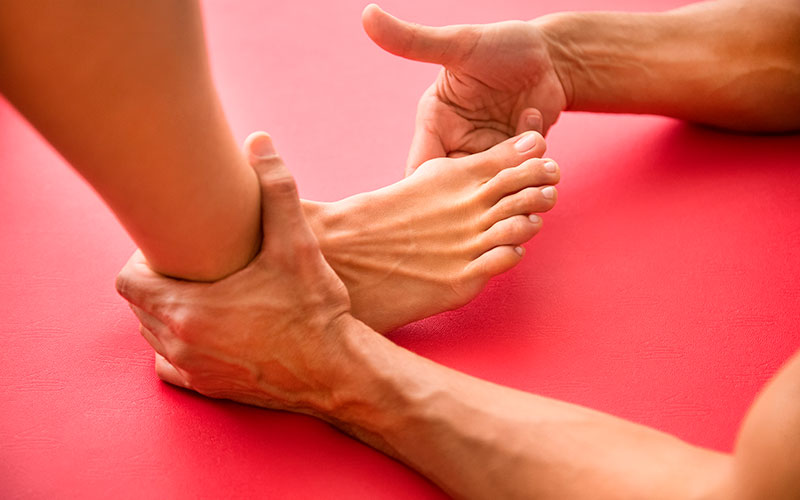Bunions
Bunions (hallux valgus) are painful bony bumps that develop on the big toe joint.

Caused by pressure on the joint, bunions develop slowly as the structure of the bone changes. Over time, the big toe begins to lean in toward the second toe which, as the deformity increases, can make it painful to wear shoes and walk.
What causes bunions?
There is consensus that there is a genetic component as people inherit the bone structure that causes the development of bunions.
Other risk factors include:
- Hypermobility – a big toe that has a bigger range of movement than is normal
- Foot injuries
- Overpronation – a low arch can make the toe joint unstable
- Rheumatoid arthritis
- Health conditions such as polio
Bunions are most common in women which is thought to be as a result of wearing tight, narrow shoes although this is not a root cause, but rather an aggravating factor. Around half of all adults and 2% of children under the age of ten develop bunions.
How does a bunion form?
Athlete’s foot is a dermatophyte infection, a fungal infection affecting the skin hair and nails. It is extremely prevalent, and the World Health Organization (WHO) estimates that dermatomycosis (fungal infection of the skin) affects around 20% of the world’s population, both male and female.
How does tinea pedis spread?
They form when the bones in the metatarsophalangeal (MTP) joint moves out of alignment, making the joint larger, and often inflamed. They usually start small and develop over time, particularly in women who wear tight-fitting narrow shoes. The MTP joint flexes with every step you take so, as the bunion grows, walking may become difficult and painful.
An advanced bunion will change the appearance of your foot as the MTP that is out of alignment causes the big toe to angle under or over the second toe, which can put pressure on the second toe. This then moves the second toe out of alignment, bringing it into contact with the third toe where calluses may develop, causing further discomfort and pain.
What are the different types of athlete’s foot?
An enlarged MTP joint can lead to other conditions, including:
- Bursitis, this is a painful condition where bursa (fluid-filled sacs that cushion the bone near the joint) become inflame
- Arthritis and chronic pain, this occurs when the articular cartilage covering the joint becomes damaged because the joint no longer glides smoothly
- Hammertoe, as the abnormal bending of the joint, leads to pain
- Metatarsalgia, swelling in the ball of the foot
- Ingrown toenails and calluses
- Pain, difficulty walking and decreased mobility in the toes
What are the symptoms?
In addition to a visible bump on the joint of your big toe, symptoms can include:
- Redness
- Inflammation
- Pain
- Hardened skin, calluses or corns
- Restricted mobility in the big toe
- Difficulty walking
When should I see a doctor?
The MTP joint has a number of important functions including helping us to bear and distribute weight so the formation of a bunion at this critical intersection of bones, tendons and ligaments can have serious implications. As the bunion progresses, your joint will become more and more misshapen, making it harder to wear shoes and continue exercising and performing other activities.
You should immediately seek professional medical advice from a foot specialist if you experience pain or if the deformity is impacting your daily activities.
A specialist will usually be able to make a diagnosis by conducting an examination of the foot and may use X-rays to determine the severity of the bunion in order to determine the correct treatment plan. In most cases the bunion will be treated without surgery with the goal of minimizing pain and discomfort and preventing further progression of the bunion. This is done by changing footwear, using bunion shield pads, custom orthotics and anti-inflammatory medication.
If surgery is necessary, a bunionectomy or an osteotomy may be performed (usually on an outpatient basis) by a specialist foot surgeon.
Make an appointment
Preventative measures can prevent a bunion from worsening as well as relieving pain and discomfort so you can continue your daily activities. This makes early intervention critical, and our team of experienced specialist doctors can help.